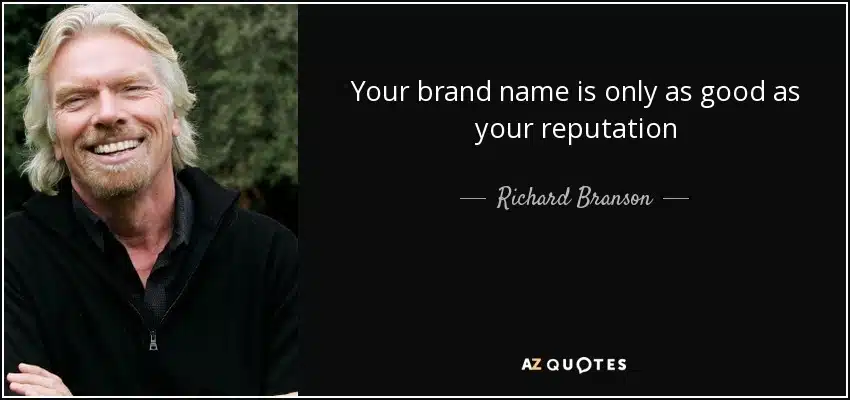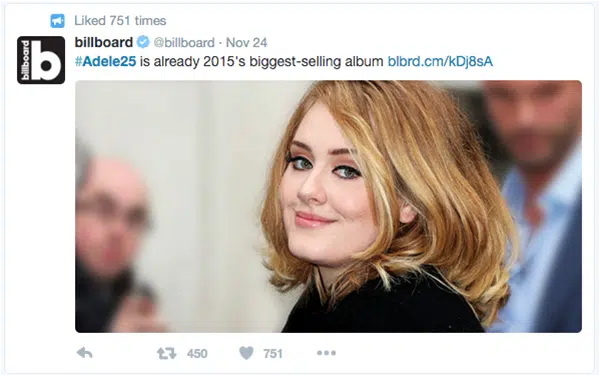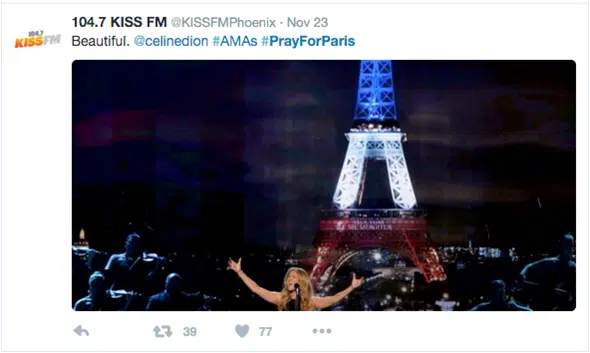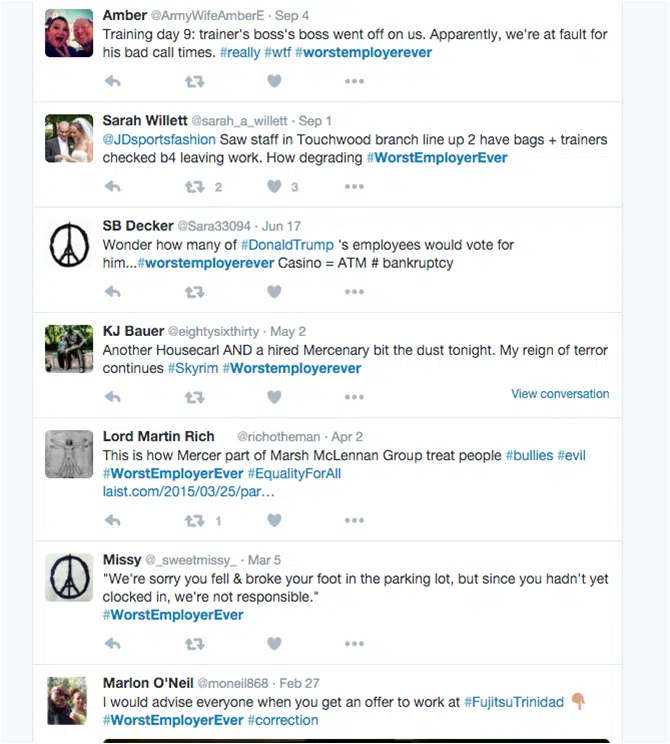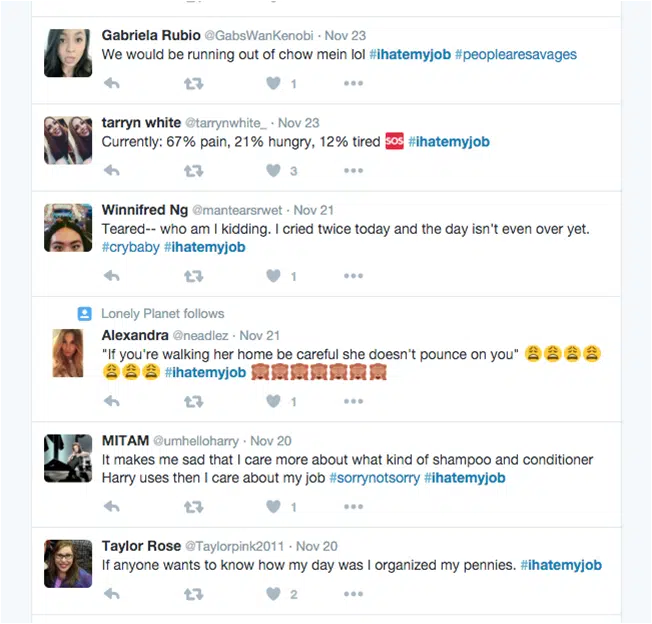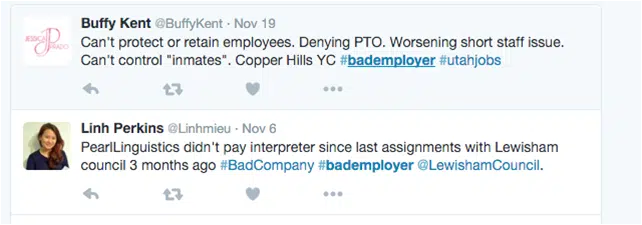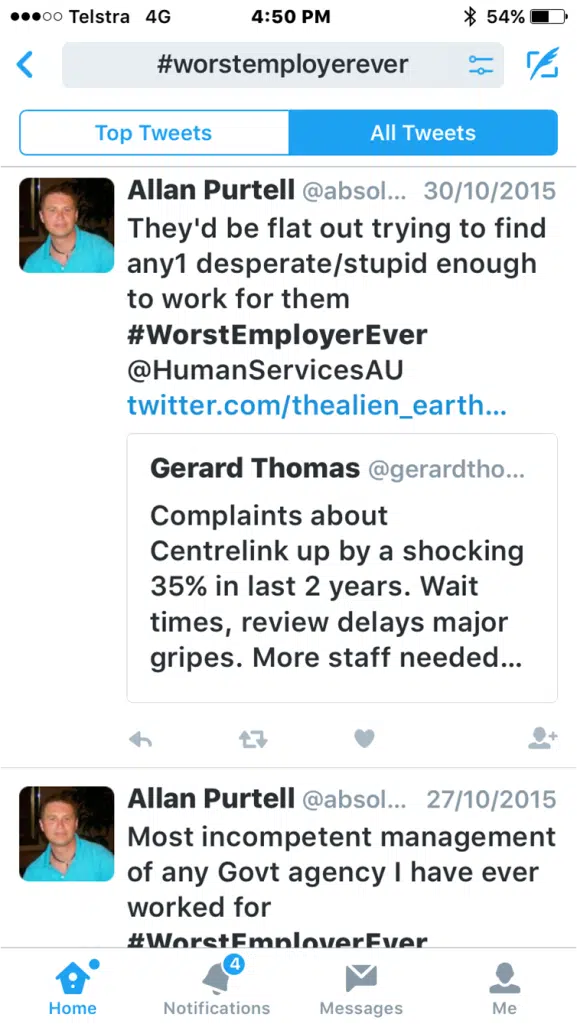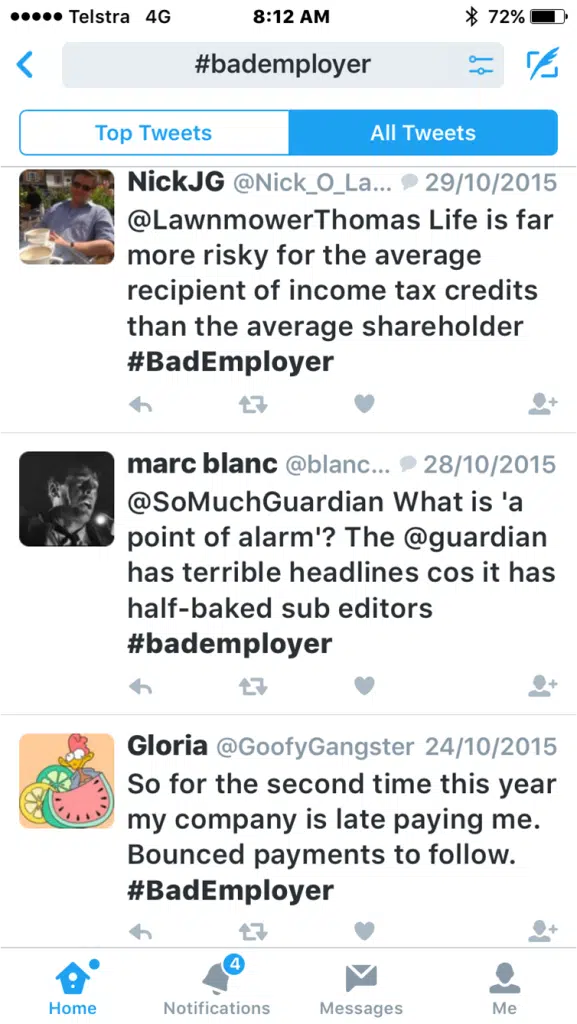I have frequently written about online threats to an employer brand and reputation.
It wasn’t that long ago, when brand and reputation management were under the control of the Board of Directors, the CEO, Corporate Affairs Department, and the PR Agency.
However, today, anyone can have a voice or presence online and therefore sway the opinion of literally millions of people.
Due to the rise of Twitter, Instagram, and Facebook, the hashtag has become the most prominent symbol on the Internet.
In fact, I would not be surprised if one day Time Magazine will elevate the hashtag as the ‘Person of the Year‘.
Definition of a # hashtag:
Simply put, a hashtag is an easy way for people to categorise, tag, find, and join conversations on any specific topic.
The aim of the hashtag is to tag the message that includes it so that it can be grouped with the other messages on that subject. The hashtag basically acts as a filter that collect all posts that have included the hashtag term. Adding the # prefix turns the term in a searchable link.
A hashtag, therefore, is a quick and efficient connector of people, trends, and topics.
Here are just two examples of how hashtags can be used to build a brand or community:
Posting about Adele’s top selling new album, the hashtag used was #Adele25
When Paris got attacked by ISIS terrorists on Nov 13 2015, people around the world posted #prayforparis

Hashtags have huge implications for any employer brand and reputation.
Hashtags can be used harmlessly and for fun. But they can also be used maliciously.
Anyone can post comments using hashtags.
Here are some examples of people hurting a brand:
I searched Twitter using the hashtag: #worstemployerever. As you look at the following posts, note the brand names mentioned.
How about another…
Or #ihatemyjob. With two or so further clicks, it’s relatively easy to find out where these Twitter posters actually work.
Here is another example: #bademployer.
What really drives the damage to a brand home, is when you sort Twitter or other social media platforms by the hashtag.
As a savvy job seeker, a diligent potential employee or an educated customer, I could sort by a hashtag and see which brands are grouped under it.
Here is what I did for #worstemployerever.
Here is what I found for #bademployer.
So what?
No brand can control the hashtag. It is truly the perfect example of a free and unregulated internet. As soon as a hashtag is published it is on that platform forever.
Brand image and reputation are at the increasing influence of hashtags that bypass the brand’s official web page.
While hashtags can be harmless, they also allow anyone to post their own comments, positive or negative.
1. Ensure your PR and reputation management people monitor your brand name and which hashtags have been included in all main social media platforms such as Twitter, Instagram, Facebook, and LinkedIn.
2. Where needed, work on repairing your brand image with comments and explanations that uphold your brand and reputation.
3. Above all else, act appropriately in all your staff dealings so that any postings concerning your brand are not associated with hashtags that degrade your reputation.
* * * * * * * *

